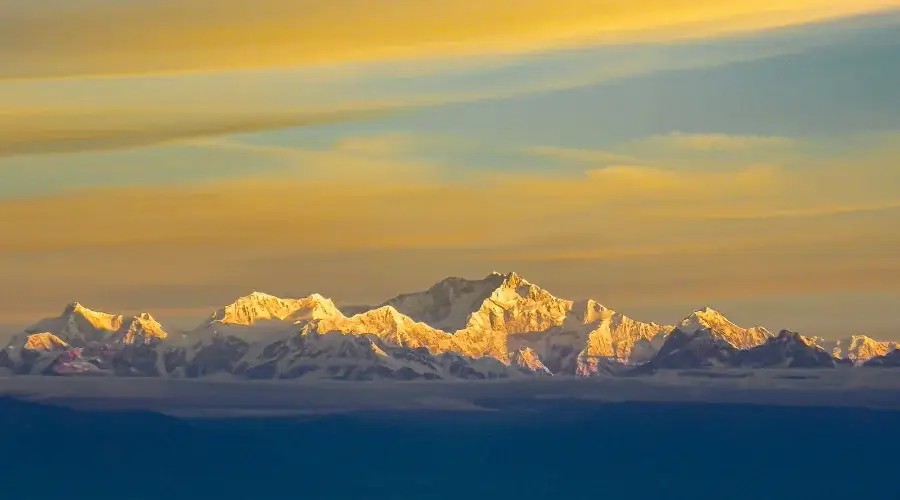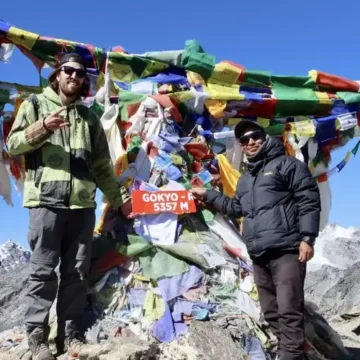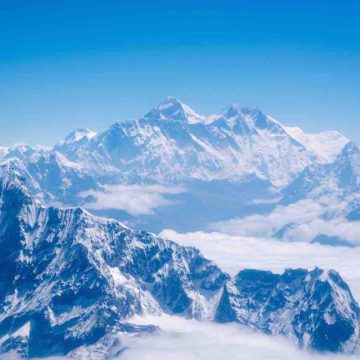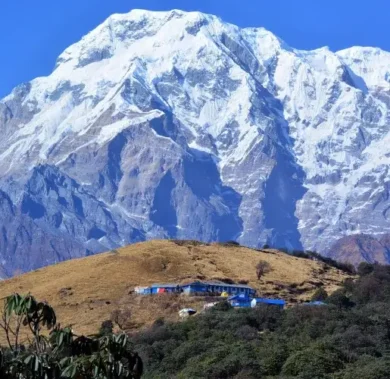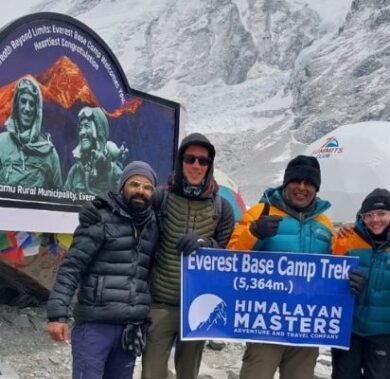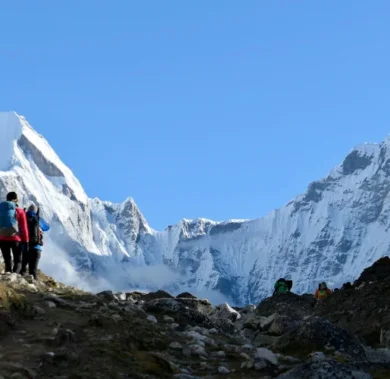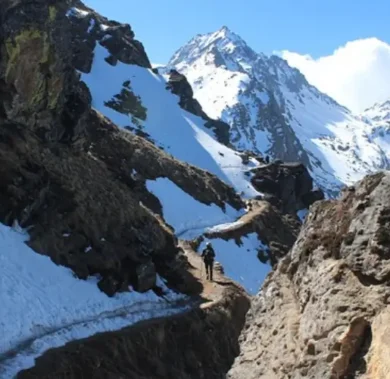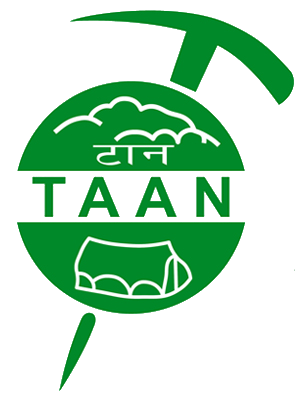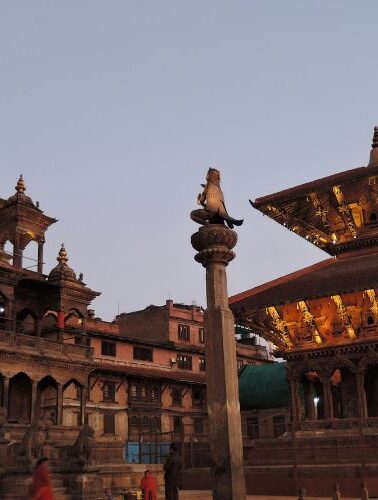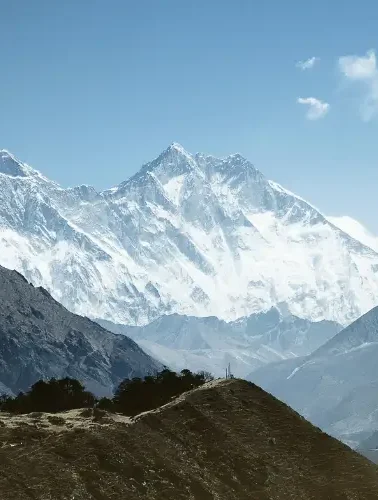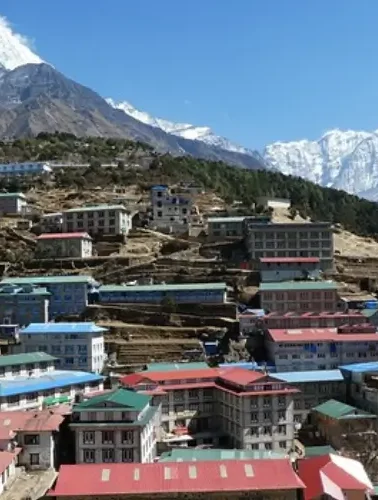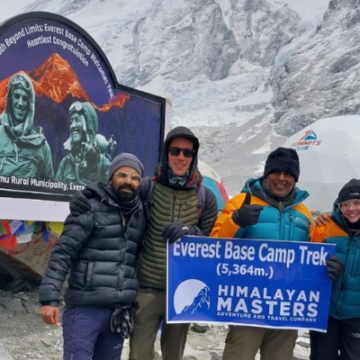
What are the required permits for kanchenjunga circuit trek?
Table of Contents
Kanchenjunga Mountain is part of the Great Himalaya range and homes Sikkim/ Darjeeling on one side and Nepal on the other (Nepal’s Taplejung District). Filled with views of the world’s tallest range, awesome landscape, rich diversity, and cultural bend, the Mt. Kanchenjunga trek is one of Nepal’s most celebrated destinations. In this article we will learn about Kanchenjunga Trek Permits.
Despite having a great perspective, the Kanchenjunga region is yet to be explored by the world. The remoteness and very challenging geography have made Kanchenjunga Base Camp retain its most pristine beauty. However, in the past few decades, genuine adventure seekers have set their foot in the wilderness of Kanchenjunga mountain. It’s among the restricted region of Nepal and needs two different kinds of Kanchenjunga permits.
- Kanchenjunga restricted area permit
- Conservation Area Project Entry Permit
Kanchenjunga restricted area permit
To prevent the influx of tourists and its haphazard control of the local culture, the Kanchenjunga summit has been kept on the list of restricted trek regions of Nepal. There are about 15 restricted regions in Nepal including the Manaslu TSUM valley trek. First, let’s learn what does a Kanchenjunga Circuit trek permit for a restricted area means? It’s a place with high cultural and historical significance that has been kept under the observation of the central government.
Once a region is kept under the list of restricted land, you need to issue a special trek permit. Most importantly, you cannot trek in Kanchenjunga without a guide or as a solo trekker. Legally, it’s compulsory to hire a licensed guide and you must trek in a group of at least two people. If you want to travel solo, contact Himalayan Masters and we might be able to arrange the permit for you.
Why is Kanchenjunga a restricted region?
Kanchenjunga summit holds great religious and cultural significance. Kanchenjunga’s rock comes from the Neoproterozoic area, dating back to about 445 million to 1 billion years old. The mountain gives rise to the four glaciers Zemu, Talung, Yalung, and Kanchenjunga (northwest). Its landscape is the complex of 3 diverse ecosystems- coniferous forests, Himalayan alpine shrubs, and the savanna. The Kanchenjunga Conservation Area holds great importance for the bio-diversity of Nepal. It homes the rarest mountain wildlife and flora such as blue sheep, yaks, and Thar.
Also, the area has mythological and religious importance to the local inhabitants. The Rai, Limbu, Tamang, Jirel, Magar, Gurung, and some Sherpa people, following their ancient tradition and culture, reside in this part of the country. Their century-old culture and traditions are still untouched by the world, and people live very primitive lives based on substantial agriculture. The restriction region has been implemented to conserve such a rich heritage of the Kanchenjunga region. Once you get the permit, you will be obliged to respect local customs and traditions. You must trek in the specified or designated route and comply with the instructions of the officials.
Where do I issue the restricted area permit for Kanchenjunga trek?
The permit is provided by the immigration department at Kathmandu, Pokhara, or any other immigration department of Nepal. Mostly, the trekkers submit their documents to a travel agency and the agency person gets them their permit.
What documents do you need to issue the kanchenjunga restricted permit?
You will need the following documents to issue the Kanchenjunga trek permit.
- Online application form (trekkers)
- A copy of a valid passport that has 6 months of validity still remaining. The passport is used to issue a visa that should also be provided while you are issuing the permit
- Name lists of trekkers
- Passport-sized photo
- Kanchenjunga Trek Itinerary
- Guarantee letter and agreement of Agency (that has a Tax Clearance Certificate and license)
- Insurance proof of the trekkers and staff that are going with you on the trek
- The license issued by The Ministry of Tourism, Culture and Civil Aviation to operate a trekking business
- Registration Certificate of Permanent Account Number
- The voucher filled up with the permitted amount
Cost of Kanchenjunga trek permit
USD 20 per person/ week (for the first 4 weeks) and USD 25 per person /week (beyond 4 weeks) Note: For Kanchenjunga climbing, there is a different kind of mountaineering permit. Even the one with a climbing permit should issue the restricted area permit but it’s free of cost. Read Kanchenjunga Trek Cost.
Kanchenjunga Conservation Area Project Entry Permit (KCAP)
Kanchenjunga is one of the five conservation areas of Nepal. This conservation area has been established to preserve the rear flora and fauna while also bringing a positive attitude of locals towards the environment. This 2035 sq. km of protected area in the Taplejung district of Nepal was established in the year 1988. This conservation area covers three types of vegetation i.e. Subtropical Evergreen Forest from 800-1,200m, Temperate Forest from 1,200-3,500m, Sub-alpine Zone from 3, 500-3,900m, and finally the Alpine Zone at 3,900-4,600m. There are the forest oaks, maples, laurels, Quercus, Castanopsis, rhododendron arboretum, and briches. The entry fee inside the Conservation Area Project goes for the management of such forests and wildlife.
Where to issue Conservation Area Project Entry Permit?
This permit can either be issued in Kathmandu or while you are on the trek route. Since you can get the conservation area permit while you are on the trek route itself, don’t worry about this one in Kathmandu. The cost for Kanchenjunga Conservation Area Project is NRP 3000 i.e. almost USD 30 for foreigners and Rs 1500 for the people of SAARC country. For Nepalese, it’s about Rs 100.
Frequently asked questions about Kanchenjunga trek permits.
Can you trek to Kanchenjunga Solo?
Legally, you can’t. As this is a restricted trekking region, there must be a group of two people and a guide to get the permit. However, it’s possible to issue a ghost permit or the agency can arrange new trekkers. Since you will be accompanied by a guide, trekking Solo is out of the question.
How long should I get to wait for the Kanchenjunga Trek Permits?
You might have to wait for 1 to 2 hours to get the restricted area permit. On the other hand, you get a conservation area permit within a few hours.
Is there a chance that I will not get the Kanchenjunga Trek Permits?
As long as you have all the documents mentioned above and don’t have any ongoing criminal record, there will be no issue in getting the permit. Is this permit the same for the mountain Kanchenjunga climb? No, you need to issue a different Kanchenjunga climb permit for the summit climb.
Final words,
Well, when you are trekking to Kanchenjunga with a package, you shouldn’t be worried about the permits. We also arrange for you the best available Kanchunjenga trek accommodation and food during the hike. Let Himalayan Masters do all the paper works while you keep on enjoying the trip. If there are any more queries, drop a comment below or leave a mail at See you…
Want to know more?
Speak to an Expert





Sandip Dhungana
Nepal 🇳🇵
Whatsapp: +977-9823636377

